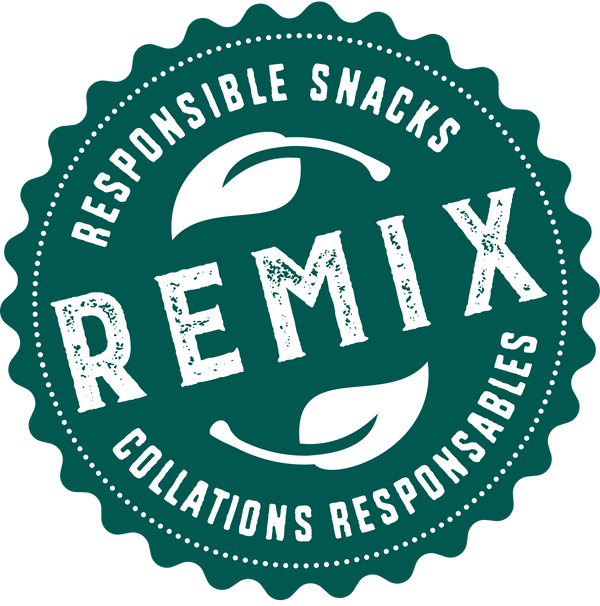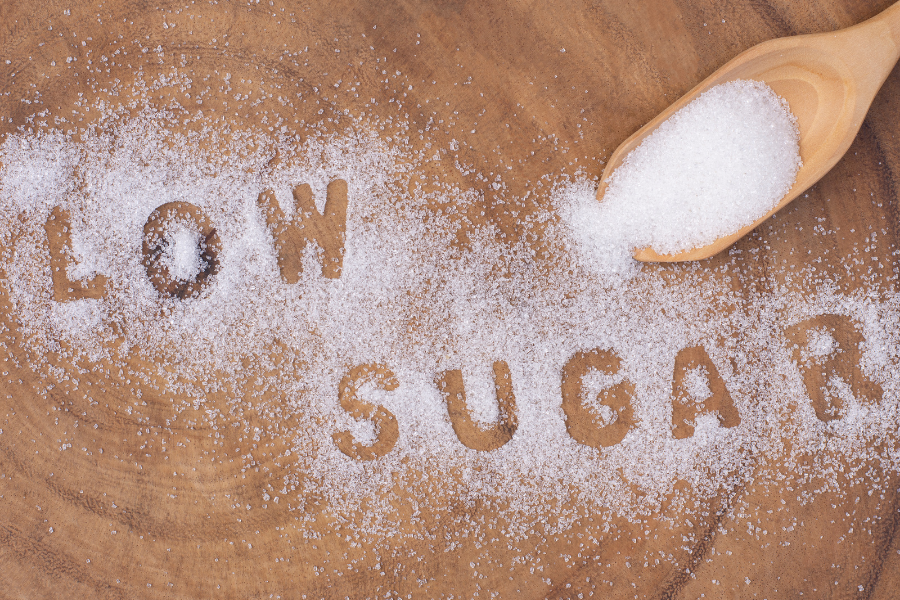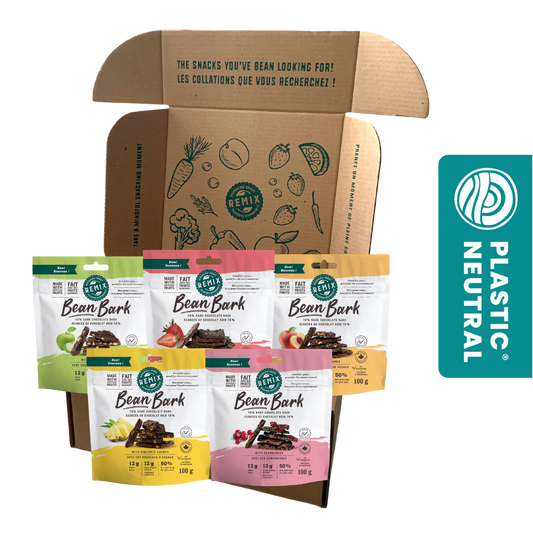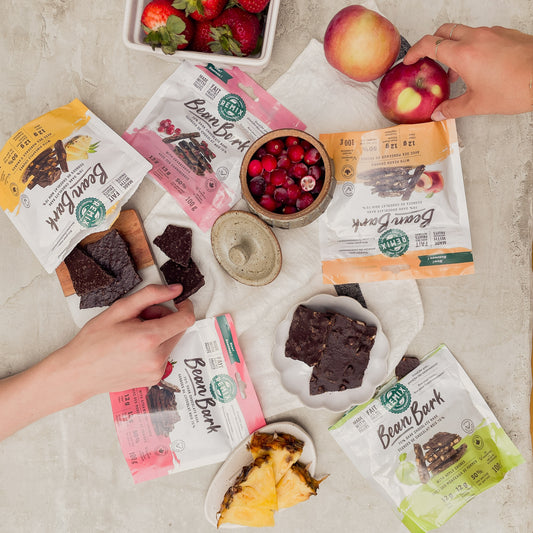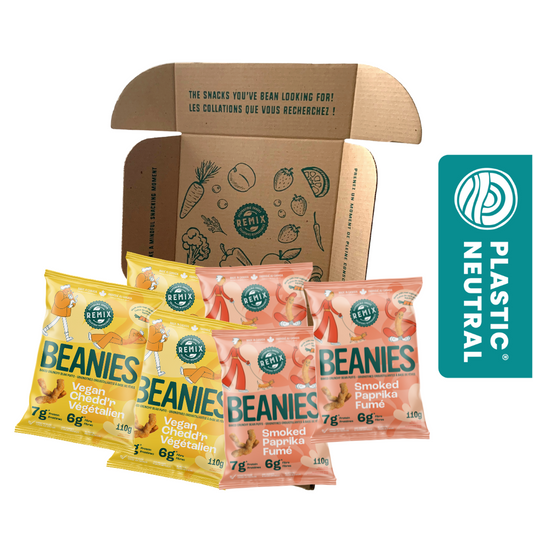
Written by: Cherry Zhou, October 2020
Sugar Claims as Marketing Tools
Many people go grocery shopping with the great intention of purchasing foods fit for a healthy diet. However, we live in a world of mass consumption where there are way too many options available. Even the yogurt aisle is packed with hundreds of different brands and flavors you can pick from.
With all this competition, the food industry needs to employ some clever tactics to attract customers into buying their products. One of their secret methods is to use nutritional food claims.
Sugar claims, for instance, is a trendy one. In fact, excessive sugar intake has been associated with many health conditions such as obesity and diabetes (1). Therefore, sugar is seen as a “villain” which many Canadian seek to limit.
Food companies know that you will be much more inclined to buy their products if you see claims such as “reduced in sugar”, “no added sugar”, and “sugar free”. These claims help portray their products as a healthier option, which makes them stand out amongst the 99 other products.
However, sugar claims can be tricky to understand and potentially misleading. Do you really know their differences?
Types of Sugar Claims
There are 4 main types of sugar claims (2).
The food contains no sugar at all (or less than 0.5g per reference serving)
No sugar has been added to the food or any of its ingredients.
The “sugar” here would also include any other sweetening agents such as fruit juice, fructose, honey, and maple syrup (3). However, the “sugar” would not include artificial sweetening agents such as stevia, sucralose (Splenda), aspartame, saccharin (Sweet N low). In fact, artificial sweetening agents provide no calories, or are very low in calories, but they add sweet taste. Therefore, a food that contains “no added” sugar can still be sweet.
The food has been reformulated such that it has 25% less sugar than its regular version.
In fact, sugar is added for many reasons beyond its sweet taste. For example, it can add a caramel flavor. Moreover, it also serves as a coloring agent. In fact, sugar is responsible for the beautiful golden-brown color of your baked desserts like creme brulee. Consequently, removing a significant amount of sugar might require modifications to the recipe to compensate for all the qualities that sugar can bring to a food.
The food has 25% less sugar than its regular version.
Unlike “reduced in sugar”, food that is “lower” in sugar does not need to be reformulated. Therefore, it is only the sugar content that is decreased. Nevertheless, a food that is in the category of “reduced in sugar” is also “lower in sugar” as they both have 25% less sugar.
The table below provides a list of synonyms for each of the 4 types of sugar claims (2).
|
Sugar claims |
Equivalent/Synonyms |
|
1. Free of sugars |
Sugar-free Free of sugar 0 sugar Without sugar Contains no sugar Sugarless |
|
2. No added sugar |
No added sugar No sugar added |
|
3. Reduced in sugar |
Reduced in sugar Reduced sugar Sugar-reduced |
|
4. Lower in sugar |
Lower in sugar Lower sugar Less sugar |
Are Foods with Sugar Claims Necessarily Healthy?
The answer is no. A healthy diet calls for less than 10% of calories from added sugar. However, almost half of the products with sugar claim are in concentration that is too high compared to the standards of recommendation (4). In addition, foods with sugar claims often have more sugar than its neighbour that has no claims at all.
Moreover, there are no restrictions on the amount of sugar allowed. For instance, if you have juice that has 60g of sugar per serving. Its version with “lower sugar” can thus have 45g of sugar in it, which is still a lot.
Furthermore, adding sugar claims does not prevent the food from being overly packed with unhealthy fats such as trans-fat.
Tips to Make Healthy Choices at the Grocery Stores
1. Look at the nutrition fact table.
The nutrition fact table is there to tell you the nutrients content of your food including how much sugar is exactly in your product.
Learn more about food labels here to get an idea of the basics, so that you can effectively use this information to your advantage.
Aa a quick tip, look at the percentage value on the right side of the table. Remember that
The table below tells you which nutrients you need “a little” (or none) of, and which ones you need “a lot” of, in a balanced diet.
|
Want to have “a little” |
Want to have “a lot” |
|
Saturated fat Sugar Sodium |
Fiber Calcium Iron |
2. Look at the ingredient list.
On a food label, the ingredients are listed in order from highest amount to lowest amount. The ingredient which is used the most will be listed first. Consequently, if you see sugar as the one of the first three items, then you know that the sugar content is high, whether or not the product claims to have “no added sugar”.
These are the common types of sugars that you can come across while reading an ingredient list (5).
|
Sugar cane/beet source |
Corn sources |
Other sources |
|
|
Ingredient |
Sugar Brown sugar Invert sugar Molasses, fancy molasses |
Glucose-fructose High fructose corn syrup Corn syrup Dextrose Glucose |
Honey Maple syrup Agave syrup Date sugar Maltodextrin |
3. Go for whole grains instead of refined grains.
The general rule is that the whiter it is, the more it is processed. Have you ever wondered why all purpose flour is whiter than wheat flour? That is because all purpose flour goes through many extra steps that rips the outer layers of wheat, which are full of fibers and other nutrients. Therefore, next time
-
Pick a whole wheat bread instead of white bread
-
Choose brown rice over white rice
4. Favor fresh foods over highly processed foods.
Sugar is not always bad. It is found naturally in many foods such as fruits. However, when you consume a fruit you are also eating all of its good nutrients and fibers.
On the other side, highly processed foods tend to have a lot of extra sugar with no added nutrients.
Furthermore, buying fresh foods and making your own meals will allow you to be in control of what you put into your recipe. You are thus, much less at risk of getting fooled by sugar claims and other nutrient claims.
5. Avoid shopping when you are hungry.
Think about what kind of foods you reach for when you are hungry. It’s probably not a slice of apple. Don't you feel like those high fat and high sugar foods are particularly irresistible during those times? For example, a bag of chips or a chocolate bar that you can simply grab and go?
While not doing groceries on an empty stomach is a great way to act more rationally, you could also educate yourself on what healthy options are up on the market.
Bean Bark, for instance, is a healthy chocolate snack created by two Dietitians. It is not only much lower in sugar compared to similar chocolate snacks, but it is also very high in protein.
References
-
Heart and Stroke. Reduce Sugar. Retrieved from https://www.heartandstroke.ca/get-healthy/healthy-eating/reduce-sugar
-
Government of Canada (2019) Carbohydrate and sugar claims. Retrieved fromhttps://www.inspection.gc.ca/food-label-requirements/labelling/industry/nutrient-content/specific-claim-requirements/eng/1389907770176/1389907817577?chap=11
-
Government of Canada (2019) Criteria for the Nutrient Content Claim No added sugar. Retrieved from https://www.inspection.gc.ca/food-label-requirements/labelling/industry/nutrient-content/no-added-sugars/eng/1409805993240/1409806059770
-
Diabetes in Control (2017). Reduced Sugar Claims Misleading. Retrieved from http://www.diabetesincontrol.com/reduced-sugar-claims-misleading/
-
Canadian Sugar Institute (n.d.). Nutrition Labelling and Claims. Retrieved from https://sugar.ca/Sugars-Consumption-and-Dietary-Guidelines/Nutrition-Labelling-and-Claims.aspx
